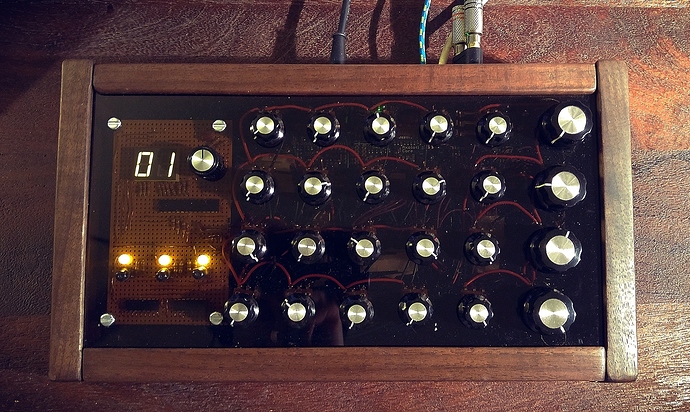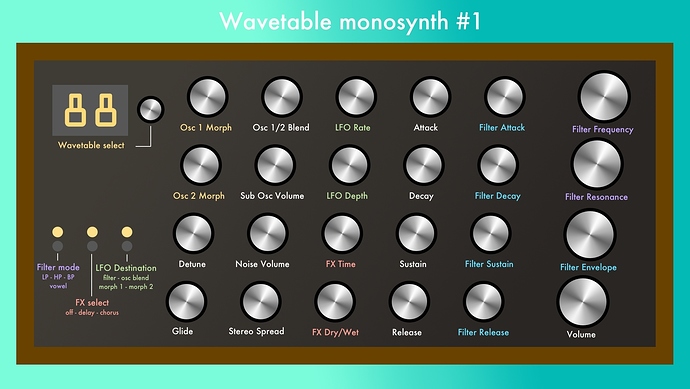Hey guys,
My hardware device and synthesizer patch are finally finished! Check it out! It's a monophonic wavetable synthesizer with 2 morphing oscillators, routable LFO, multimode filter (thanks to @sputnki for the vowel filter design!), dual envelopes, and stereo FX. You can download the patch below and use your own wavetables with it as well.
Here's what my DIY enclosure/controller looks like – I call it the xylobox:
You can hear some sounds and see me demo the the synth in this short video. It wouldn't be a proper wavetable demo without some oscilloscope action, so I got out the old Hitachi V-355 to show you what the morph functions do:
If you're interested in the hardware construction process, check out this gallery showing the build process and marvel at my ugly soldering:
View gallery on imgur.com→
And finally, here are the patches for you to toy with! I've left out the hardware/control management patches so you can run it on your own control setup, but if anyone's interested I can share the details on that as well (it's mostly a lot of script objects and countersat2 stuff). Enjoy!
master_patch.axp (17.5 KB)
wavetable_voice.axs (40.9 KB)
vowel_filter.axs (15.4 KB)
stereo_delay.axs (9.2 KB)
You'll need some wavetable files to get any sound, so open the axoloti in card reader mode and create a folder called "wt". The wavetable_voice.axs file specifies where it will look for files, and it's configured by default to read 512-sample .RAW files from this folder. Here is a .zip of 20 such files made from AdventureKid's free wavetables to get you started:
http://matthewcieplak.com/dd/instruments/wt.zip
Backup link: https://drive.google.com/drive/folders/1jAx05oj_oWoyeeOyhWAcNhijK9UnTGtq?usp=sharing
For more information on creating your own wavetables, refer to @jaffasplaffa's thread here:


 thanks for the credit!
thanks for the credit!


